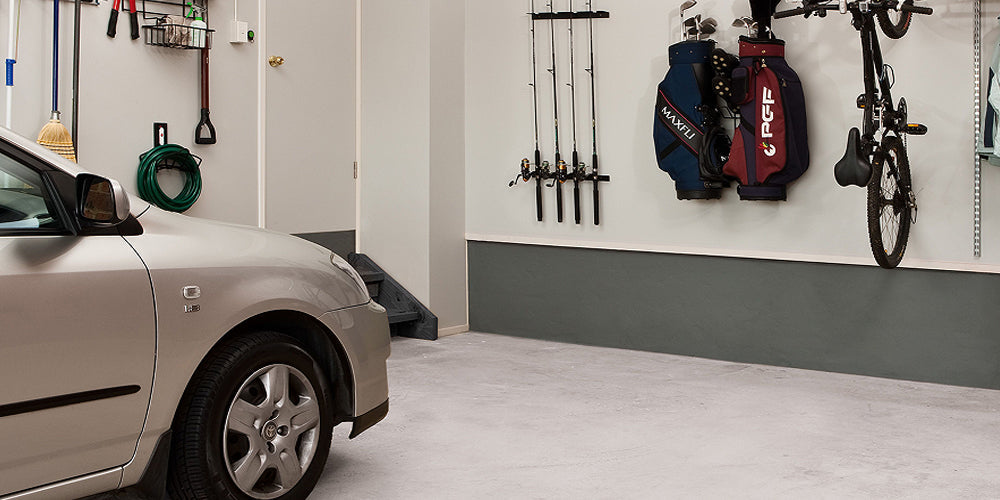Anyone who has suffered from mold in the past or is battling now can relate it is more than just an unsightly nuisance. Mold poses significant health risks and can cause serious damage to your home. What’s more shocking is that every second building or house is having mold issues in the United States. Because under the right circumstances, it breeds in just days. Understanding the relationship between humidity and mold growth is crucial for maintaining a healthy living environment. So, what humidity does mold grow, and how can you prevent it? This blog will explore the ideal house humidity levels, how humidity affects mold growth, and effective strategies for keeping mold at bay, including the use of Air Scrubbers and Negative Air Machines from Abestorm.
Understanding Mold Growth
Humidity plays a significant role in mold growth. But at what humidity does mold grow? Typically, mold can start to grow when the relative humidity (RH) level in your home exceeds 60%. This is because mold spores need a certain amount of moisture in the air to thrive. Understanding the ideal humidity levels is essential in preventing humidity mold issues.
To effectively control mold growth, it's important to know the ideal house humidity levels and the specific humidity levels that promote mold. The ideal humidity level to prevent mold is below 60%. It can significantly reduce the chances of mold growth. However, achieving and maintaining this level requires a proactive approach to humidity control.
Causes of Humidity and Mold Growth
Several factors can contribute to high humidity levels in your home, creating an environment conducive to mold growth. These include poor ventilation, water leaks, high outdoor humidity, and everyday activities like cooking, showering, and drying clothes indoors. When these factors combine, they can push your home's humidity levels into the danger zone for mold growth.
To combat these issues, it's essential to use tools like dehumidifiers and air scrubbers, which can help maintain the ideal humidity and prevent the conditions that lead to mold growth. Understanding what humidity can mold grow at and taking steps to manage it is crucial for a healthy home environment.
The Role of Humidity in Mold Growth
Understanding the concept of relative humidity (RH) is essential in controlling mold growth in your home. Relative humidity refers to the amount of moisture in the air compared to the maximum amount of moisture the air can hold at a given temperature. It is expressed as a percentage, with 100% RH meaning the air is fully saturated with moisture.
What Humidity Does Mold Grow?
Mold thrives in environments where the relative humidity is high. Specifically, mold growth becomes a significant risk when indoor humidity levels exceed 60%. At this level, the air contains enough moisture to provide an ideal environment for mold spores to settle, germinate, and proliferate. Therefore, maintaining a lower RH is crucial to preventing mold growth.
Why Is Humidity Crucial for Mold Growth?
Humidity is a critical factor for mold growth because mold spores require moisture to activate and grow. When humidity levels are high, especially in poorly ventilated areas, moisture accumulates on surfaces, providing the damp environment mold needs. This is why bathrooms, basements, and kitchens—places prone to higher humidity levels—are common areas for mold infestations.
Specific Humidity Levels That Promote Mold Growth
As mentioned, mold starts to grow when the relative humidity exceeds 60%. However, for optimal mold prevention, it is recommended to keep the indoor humidity levels between 30% and 50%. This range is not only effective in preventing mold but also comfortable for human occupancy. When RH consistently stays below 60%, mold spores are less likely to find the moisture they need to grow, thus reducing the risk of mold problems.
Ideal House Humidity Levels
Having a better understanding of at what humidity does mold grow and maintaining the ideal house humidity levels is essential for both comfort and health. The recommended ideal humidity level to prevent mold can vary depending on the season and climate but generally fall between 30% and 50%.
Recommended Humidity Levels for Different Seasons and Climates
- Summer: During warmer months, aim to keep the humidity level between 40% and 50%. Higher outdoor temperatures increase the moisture-holding capacity of the air, so dehumidification might be necessary to maintain these levels indoors.
- Winter: In colder months, the indoor humidity level should be between 30% and 40%. Lower humidity helps prevent condensation on windows and other surfaces, which can otherwise become breeding grounds for mold.
How Maintaining Ideal House Humidity Can Prevent Mold Growth
Maintaining ideal house humidity levels is a proactive approach to preventing mold. By keeping the RH below 60%, you create an environment that is inhospitable to mold spores. This helps prevent mold growth on surfaces such as walls, ceilings, and floors, and in hidden areas like behind wallpaper and under carpets.
Tools and Methods to Measure and Control Humidity
To effectively manage and maintain the ideal humidity levels in your home, consider using the following tools and methods:
- Hygrometers: These devices measure the relative humidity in the air. Place hygrometers in various rooms to monitor humidity levels and ensure they remain within the recommended range.
- Dehumidifiers: Especially useful in basements, bathrooms, and other areas prone to high humidity, dehumidifiers help reduce moisture levels. For larger areas or severe humidity issues, a commercial-grade dehumidifier might be necessary.
- Air Scrubbers and Negative Air Machines: These devices can help control humidity and improve air quality by removing airborne particles, including mold spores. Air Scrubbers and Negative Air Machines are excellent options for maintaining a clean and mold-free environment.
- Ventilation: Proper ventilation is key to controlling humidity. Use exhaust fans in bathrooms and kitchens, and ensure that your home’s HVAC system is well-maintained to facilitate air circulation.
By understanding what humidity can mold grow and taking steps to maintain ideal humidity levels, you can protect your home from mold and create a healthier living environment.
Humidity and Mold Prevention Strategies
Steps to Reduce Humidity in Different Areas of the House
- Basements: Use a high-capacity dehumidifier to manage the higher humidity levels often found in basements. Seal any cracks or leaks to prevent water intrusion.
- Bathrooms: Install exhaust fans and use them during and after showers. Wipe down wet surfaces to reduce moisture buildup.
- Kitchens: Use exhaust fans while cooking to remove steam and moisture. Keep the area dry by wiping down surfaces after use.
Importance of Ventilation, Dehumidifiers, and Regular Maintenance
Proper ventilation and the use of dehumidifiers are crucial in controlling humidity levels in your home. Regular maintenance of these systems ensures they operate efficiently. Ventilation helps to circulate air and reduce moisture buildup, while dehumidifiers actively remove excess moisture from the air.
Role of Air Scrubber and Negative Air Machine in Controlling Humidity and Improving Air Quality
An Air Scrubber and a Negative Air Machine are essential tools in controlling humidity and improving air quality. These devices not only remove moisture but also filter out mold spores and other contaminants, providing a healthier living environment. Abestorm offers high-quality Air Scrubbers and Negative Air Machines that are effective in managing humidity and preventing mold growth.
Using Air Scrubber and Negative Air Machine
How an Air Scrubber Works to Reduce Mold Spores
An Air Scrubber works by drawing in air from the environment and passing it through a series of filters that trap mold spores, dust, and other contaminants. The clean air is then recirculated back into the room. This continuous process helps to reduce the number of mold spores in the air, lowering the risk of mold growth.
Benefits of Using a Negative Air Machine in High-Risk Areas
A Negative Air Machine creates a negative pressure environment by drawing air out of a sealed space and filtering it before releasing it outside. This is particularly beneficial in high-risk areas such as basements and crawl spaces, where mold growth is more likely due to higher humidity levels. The Negative Air Machine helps to maintain lower humidity levels and improve air quality by continuously removing contaminated air.
Conclusion
Maintaining the right humidity levels is crucial in preventing mold growth. By keeping indoor humidity levels between 30% and 50%, you can create an environment that is less conducive to mold. Regular monitoring and the use of dehumidifiers, along with proper ventilation, are key strategies in managing humidity.
Ready to Take Control of Humidity and Mold of Your House?
To ensure your home remains mold-free, visit Abestorm to explore our range of Air Scrubbers and Negative Air Machines. These devices are designed to help you maintain optimal humidity levels and improve air quality. For personalized advice on mold prevention and humidity control, contact Abestorm today. Our team of experts is ready to assist you in finding the best solutions for your needs.









Shop For Dehumidifier